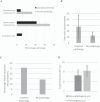Laryngotracheal Pathologies and Symptoms Associated to Airway Management of Critically Ill COVID-19 Patients at One-Year Follow Up: An Observational Study
- PMID: 40534324
- PMCID: PMC12177439
- DOI: 10.1111/aas.70074
Laryngotracheal Pathologies and Symptoms Associated to Airway Management of Critically Ill COVID-19 Patients at One-Year Follow Up: An Observational Study
Abstract
Background: The European laryngological society predicted an increased incidence of laryngotracheal complications as a result of the COVID-19 pandemic. During the first pandemic wave in the Stockholm region, 31% of critically ill COVID-19 patients were tracheotomized by an open surgical (OST) or a percutaneous tracheotomy (PCT). The aim of this study was to investigate the incidence of visible laryngotracheal pathologies in tracheotomized and long-term intubated COVID-19 survivors ≥ 12 months after initial intubation, to examine whether these pathologies were symptomatic and to assess possible associated factors.
Methods: Study participants underwent laryngotracheoscopy under local anaesthesia, and tracheostomy skin and soft tissue scars were photo documented. Patient-reported outcome measures - the Voice Handicap Index-10 (VHI-10), the Eating Assessment Tool-10 (EAT-10) and the Dyspnea Index (DI), and demographics were retrospectively extracted from patient medical records.
Results: Of 73 included study participants (40 OST, 24 PCT and 9 long-term intubated), 58% had visible laryngotracheal pathologies. Tracheostomy tube size and the number of days with tracheostomy were associated with skin and soft tissue pathology and tracheal pathology (p < 0.05). The results of the VHI-10 and EAT-10 were congruent with both laryngeal and skin and soft tissue pathologies. Participants with the highest DI scores, indicating breathing difficulties, had both laryngeal and tracheal pathologies followed by tracheal pathology alone.
Conclusions: A high incidence of visible laryngotracheal pathologies, two airway management-related factors, and symptom-pathology associations for VHI-10 and EAT-10 scores were found in a cohort of COVID-19 survivors ≥ 12 months after critical care.
© 2025 The Author(s). Acta Anaesthesiologica Scandinavica published by John Wiley & Sons Ltd on behalf of Acta Anaesthesiologica Scandinavica Foundation.
Conflict of interest statement
The authors declare no conflicts of interest.
Figures



References
-
- Piazza C., Filauro M., Dikkers F. G., et al., “Long‐Term Intubation and High Rate of Tracheostomy in COVID‐19 Patients Might Determine an Unprecedented Increase of Airway Stenoses: A Call to Action From the European Laryngological Society,” European Archives of Oto‐Rhino‐Laryngology 278 (2021): 1–7. - PMC - PubMed
-
- Felix L., Tavares T. L., Almeida V. P. B., and Tiago R. S. L., “Incidence of Laryngotracheal Lesions After Orotracheal Intubation in Coronavirus Disease Patients,” Laryngoscope 132 (2022): 1075–1081. - PubMed
-
- Rouhani M. J., Clunie G., Thong G., et al., “A Prospective Study of Voice, Swallow, and Airway Outcomes Following Tracheostomy for COVID‐19,” Laryngoscope 131 (2021): E1918–E1925. - PubMed
Publication types
MeSH terms
Grants and funding
LinkOut - more resources
Full Text Sources
Medical

